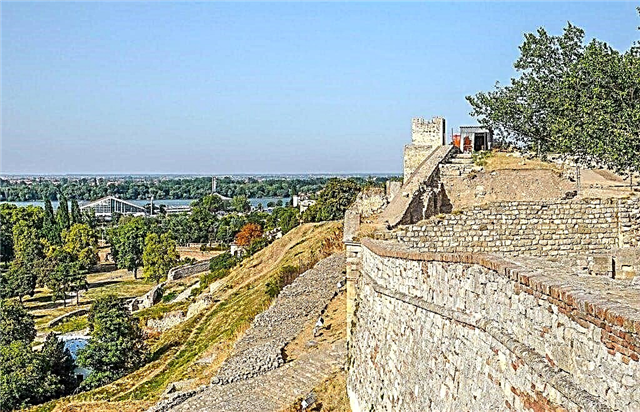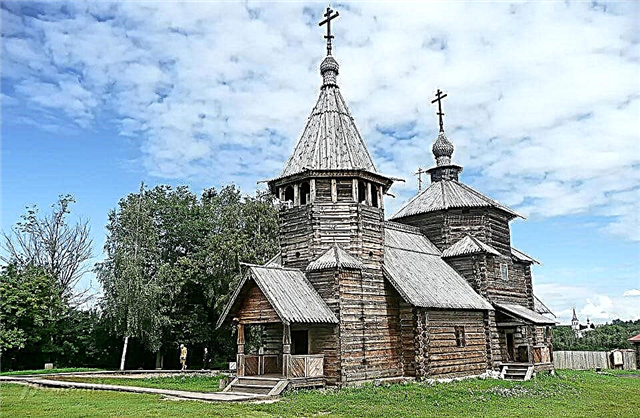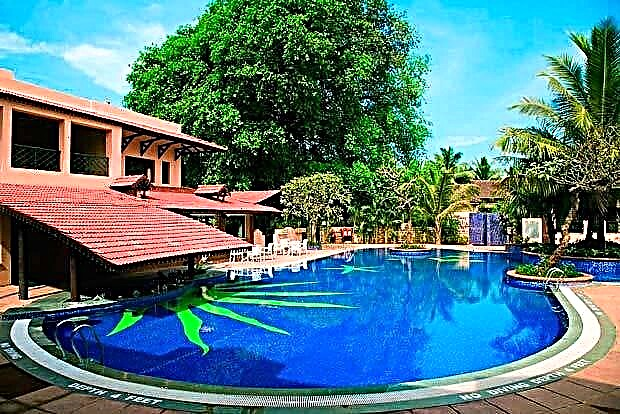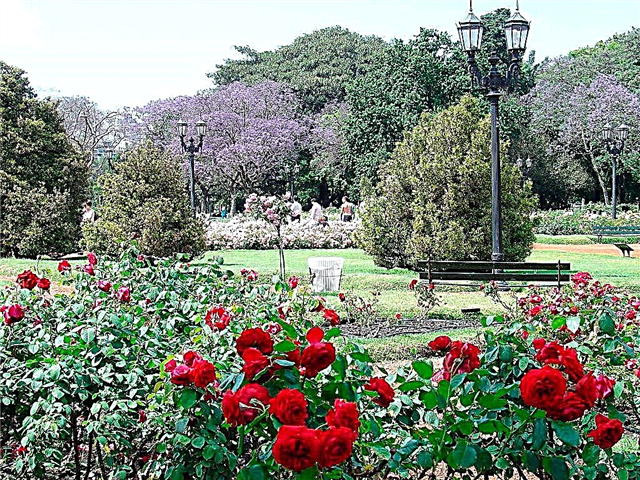What comes to mind first when it comes to Argentina? If your knowledge of this phenomenal Latin American country is limited to such concepts as football, tango and Indians, then you should think about an urgent purchase of a ticket to the very heart of this amazing state. Today we are going to one of the most exotic and charismatic places on the planet - the capital of Argentina, the city of Buenos Aires.
Read how and where to buy cheap flights in our life hack, as well as how to plan a trip to Argentina on your own.

Old colony in the New World
Until recently, Argentina was considered an underdeveloped country, which can hardly really surprise you with anything. But today tourists are presented with a kind of "perfect" world of contrasts, in which both the Spanish quarters, which amaze with their modest and, at the same time, unusual architecture, as well as the ultra-modern business center and skyscrapers, coexist perfectly.
There is everything here to feel the continuity of the eras: poor quarters alternate with rich ones, Spanish culture intertwines with Indian traditions. Believe it or not, the old part of Buenos Aires is very reminiscent of several colorful corners of the planet at once - the cities of Paris, London and Madrid. At the same time, the new districts boast not only developed infrastructure and impressive architecture, but also rich “green” areas, among which there are parks and boulevards with monuments.

Those who know well the history of Argentina, which has had many years of colonial rule by the Spaniards, can easily find in the surrounding abundance many reminders of those distant times. In particular, the once popular long and straight streets that led from the coast to the central square have been preserved.
La Boca
There is something to see in the capital of Argentina. The most famous place among tourists is called La Boca. One has only to step on the street of the district paved with paving stones and tiles, and the soul will immediately ask to dance, and the eyes will greedily absorb the beautiful pictures that are reflected in every square meter. Dances, songs and picturesque walls of buildings - all this will not leave anyone indifferent to the local beauties, which are created on their own motive.

If you ever hear that La Boca is an artificially created landmark and has nothing to do with the culture of the Argentines, you shouldn't pay attention to it. Be sure to take some time in your travel schedule and enjoy a unique area unlike anything else on the planet. Numerous artists will gladly offer you to purchase excellent landscapes on canvas. Among the presented assortment, there are very worthy specimens that can become an excellent addition to your personal collection.

A kind of "attraction in the sights" of La Boca is Caminito Street, on which there is an impromptu gallery, where local painters create their masterpieces day and night. And the atmosphere itself is saturated with tango rhythms, to which numerous dancers perform "pas" right in the middle of the street.
But the first thing that catches the eye of everyone who falls into the "warm embrace" of La Boca is the colorful houses. The variety of shades and palettes is so immense that it seems as if there are no two identical houses here. This is a truly amazing and, without exaggeration, bright place.

Well, how can you go past the souvenir shops, where you can find such wonders that will take your breath away. And every tourist from Russia with surprise and dignity will note for himself the presence of a native "nesting doll" among the goods, which has long taken root in Argentina.
If we turn to the history of the region, then there will be no limit to surprise. Earlier, when the city was a huge port, there were hundreds of shacks on the modern streets of La Boca, the main inhabitants of which were black slaves. The modern look of the area began to form only in the 19th century, when immigrants from the Old World, the bulk of whom were Italians, took a fancy to these places. They then began to create a unique corner, which today resembles a multi-colored paradise.

But this is now. In those days, the owners simply lacked paint of one color, so they had to use several shades, creating a unique design of buildings. The roof, doors, windows and walls all had different colors. Today, maintaining this kind of area has become a tradition. Therefore, every year houses in the La Boca area acquire more and more new shades.
Not far from La Boca is the stadium of the local football team Boca Juniors, which has a rich history. The team first entered the field in 1905. Then the lion's share of the players had Italian roots.

Finally, we note that, despite its tourist appeal and wide popularity, the area itself is considered one of the most disadvantaged. Therefore, it is not recommended to go far from the central part of La Boca - Caminito street. And in the dark, it is generally better not to indulge in dreams, wandering through the quiet streets of the area.
Obelisk in Buenos Aires
The center of Buenos Aires is known for another attraction. The Obelisk is considered a peculiar symbol of the Argentine capital, which is located in the middle of the Republic Square. Rumor has it that it was in the place where the monument stands today that the flag of independent Argentina fluttered in the wind for the first time.
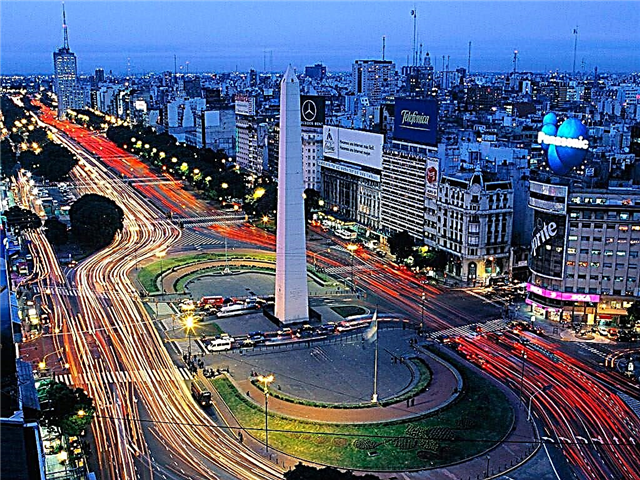
It's hard to imagine, but more recently, the Obelisk has been the focus of many controversies. Rumor has it that it was proposed to demolish it at all. But today, not only mass festivities take place on the square, but also almost all city holidays. The Obelisk was built back in 1936 to celebrate the 400th anniversary of the founding of the capital. Construction proceeded at an accelerated pace, thanks to which the Obelisk was ready in a month.
Palermo forests
It is under such an unusual name that almost the largest park in Buenos Aires is known. By the most modest standards, its area is as much as 400 hectares. The name comes from the area in which it is located. There is another, official name - the Park of the third of February.

The park is especially popular among lovers. Here you can not only take a break from prying eyes of strangers, be alone in the shade of huge trees in some secluded place, but also go boating. For this, three artificial reservoirs were created here. Well, connoisseurs of Argentine culture should definitely visit that part of the park, which is called the Park of Poets. Here you can find many bronze-cast busts of writers and poets, including Jorge Luis Borges, William Shakespeare and many others.
Interestingly, when creating the Palermo Forests project, the architect Julio Dormal and the urbanist Jordan Kzeslow Visoki took the world-famous Bois de Boulogne in Paris and London's Hyde Park as a basis. For the first time, the park opened its gates to visitors in 1875.

Well, with the onset of the 20th century, the park acquired new landscape and not only projects. Visitors had the opportunity to spend time visiting the planetarium, botanical and zoological gardens, and the rose garden. The idea was created by landscape designer Carlos Theis.Just imagine, there are about 12 thousand roses growing in the rose garden! What a magnificent sight opens before its visitors at the moment when the "queen of flowers" blooms in hundreds of different shades! The main attraction of the park is the world's largest Japanese garden, which can only be found outside the Land of the Rising Sun.
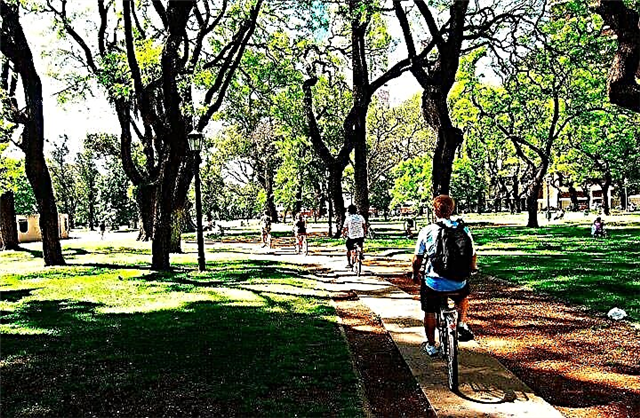
Due to its unique content, Palemar forests are popular not only among visitors, but also among locals who enjoy spending time in its blessed shade. Young parents walk with their children, accustoming the kids to the local beauty, instilling a love for nature and their native lands. Well, everyone else has long chosen the local places for outdoor events and ordinary picnics for the weekend.
Perhaps the only questionable quality of the park is the presence of groups of transvestites who are too persistently trying to make acquaintance with passers-by. But even this cannot spoil the vivid impressions of even a short stay in the green thick of the forest.
Theater "Colon"
Another striking landmark of the Argentine capital is the Colon Opera House. The name translates as "Columbus" and recalls in whose honor this architectural phenomenon was built. The theater is dedicated to the discoverer Christopher Columbus.
This is not only a unique architectural structure, but also a real reason for the pride of all residents of the main Argentine city. The theater is not in vain considered the center of classical music, as well as the abode of opera throughout Latin America. It is worth visiting the building even if you are not an ardent fan of this art movement.

The building of the theater clearly indicates the use of the Renaissance style, which also accompanies the interior. In 2010, the theater underwent a global renovation, which was timed to coincide with the 200th anniversary of Argentina's independence. The most popular works that regularly sound within the walls of this beautiful building are compositions by Russian classics. It is difficult to convey in words how reverently the locals are about classical music, which was created by the great Russian composers.

Argentines have always been considered ardent fans of opera. Therefore, such institutions of art as the Colon Theater have a special relationship here. Every year, from the very beginning of the 19th century, dozens of opera performances have been held here.
As for the main stage, the first stones of the building were laid back in 1856. And few of the ordinary tourists know that the main author of the Colon theater project was Carlos Pelegrini, whose son was destined to occupy the highest state post in the future. When the theater was ready, one of the first performances on its stage was the world famous opera by the Italian genius Verdi "La Traviata".

Perhaps the most important advantage of the theater is its simply phenomenal acoustics, which gives a lot of pleasure from contemplating the action that unfolds on the stage. And among the stars of the world scale, who performed on the great stage, there are such names as F. Chaliapin, E. Caruso and Luciano Pavarotti.

Today the theater hall can accommodate 2,500 spectators. After the last construction, standing places appeared, which allow additional accommodation for opera lovers in the amount of up to 1000 people.
Each tourist has the opportunity to visit the grandiose structure as part of an excursion tour. The cost of the tour is on average $ 30, which is considered a very expensive pleasure by the local standards. But for a ticket you will have to "lay out" from 10 to 400 dollars. It all depends not only on the place in the hall, but also on the significance of the performance itself.

Recoleta cemetery
End the review at the Recoleta Cemetery. It would seem, how can such a place be compared with the sights listed above? But everything is not as simple as it seems at first glance. The fact is that each crypt located on its territory is itself a real work of art.

Just what is the list of famous personalities buried here, whose contribution to the development of the city and country is difficult to overestimate. A dozen presidents, many politicians and cultural figures, as well as scientists and simply honorary citizens found eternal peace here.
At first glance, it seems that all the chic that could only be found in Argentina is collected here. Rich graves with elements of unique decor in the form of columns and monuments, as if competing with each other, try to amaze the imagination with their outlandish forms.

Unfortunately, many graves are gradually falling into decay and destruction. This is due to the fact that the relatives of the deceased have also died or left, and there is no one else to look after the graves.

